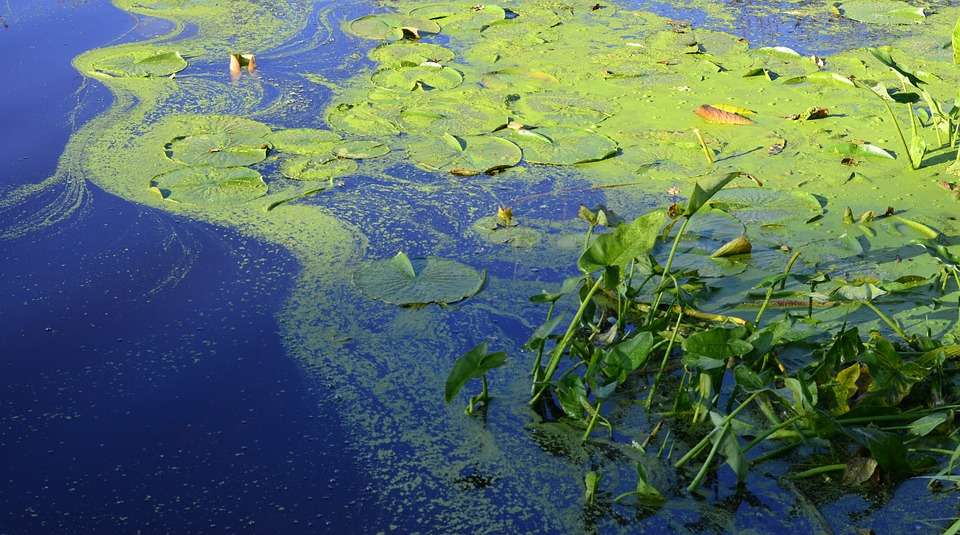
By ALICIA BOOR
Cottonwood Extension District
Blue-green algae blooms are an issue that usually occurs during the spring and summer. Calm, sunny, dry, and hot days of summer create ideal conditions for blue-green algae to thrive in our livestock ponds. Blue-green algae occurrence is sporadic, making its threat unpredictable.
Despite its name, these blooms are not algae, but a cyanobacteria. Some of these cyanobacteria can produce and release dangerous toxins that are of major concern for our livestock.
These “cyanotoxins” typically show up as either neurotoxins, or hepatotoxins which means they can damage the nervous system or the liver function of animals.
Typically, the first clinical sign noticed in pasture cattle that have consumed neurotoxins are dead cattle. If found early enough, cattle may have muscle tremors, difficulty breathing, seizures, slobbering, and diarrhea. Hepatotoxins can cause an acute death similar to neurotoxins or lead to delayed issues with liver failure. An example of this would be weight loss and photosensitization, which can be recognized by severe sun burns on areas of the body not covered with hair.
Since there are several causes of acute death in pasture cattle, contact your local veterinarian for diagnosis. Unfortunately, there are no known antidotes to these cyanotoxins. So, understanding what to look for, and avoiding livestock exposure is important.
Blue-green algae blooms float at or just below the surface of the water. The appearance almost looks like paint in the water. Once the cyanobacteria die, it turns a blue color. The color can also vary to a grey to almost a red or brown color as well.
Toxin concentrations in affected water can vary drastically. The wind can move these blooms and concentrate them in certain areas along the shorelines of ponds. These concentrations increase the lethality of the toxic blooms.
Preventing exposure to blue-green algae toxins is very important during the summer months.
There are some options for livestock producers if blue-green algae is suspected or has been identified. Of course, fencing off natural water sources and providing alternative water sources is the best option (well water, hauled water), but is typically financially limiting.
Fencing off certain areas of the ponds (downwind portion of ponds) may help limit exposure. Improved watering areas, such as pipe-fed waterers, may also limit exposure as long as the water inlet is located in a low-risk area of the pond.
A submerged inlet in the center of the pond is an area where the cyanobacteria are unlikely to concentrate. Improved water sources like this will also help increase other water quality attributes.
Controlled access and tank waterers decrease sediment, nutrients and fecal coliform bacteria from building up in the water source.
Treatment of the water source with copper sulfate has historically been recommended. However, the copper accumulates in the pond, leading to other potential problems with plants and animals alike and is not recommended.
Barley straw is also often discussed as a control measure. While the mechanism is unknown, barley straw may help reduce new blooms from forming but do not directly kill active blooms.
Monitoring of stock ponds during the summer months and having a plan in place to combat blue-green algae will help ensure the health and wellbeing of our herds.
Water samples can be sent to the Kansas State Veterinary Diagnostic Lab:
KSVDL
Mosier D-117
1800 Dension Ave.
Manhattan, KS 66506
Alicia Boor is an Agriculture and Natural Resources agent in the Cottonwood District (which includes Barton and Ellis counties) for K-State Extension. You can contact her by e-mail at [email protected] or calling 620-793-1910.






